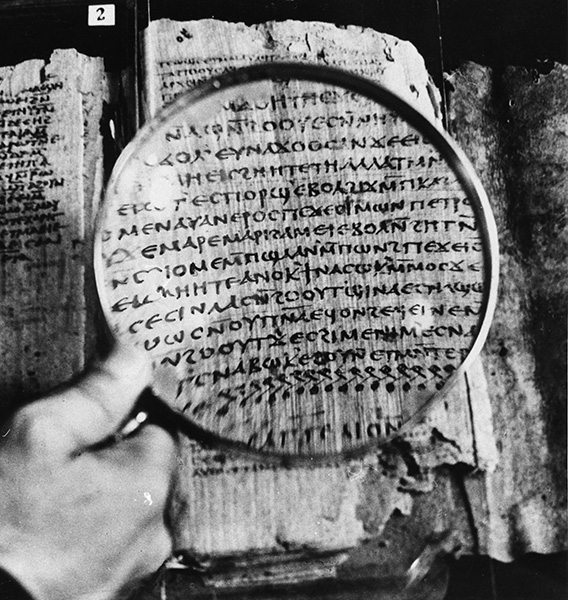I remember reading the Gospel of Thomas (which is accepted in gnostic Christianity ), and a teaching of Jesus in it clearly rhymed with Taoist teachings.
The Gospel of Thomas includes 114 sayings of Jesus - the hidden words that the living Jesus spoke which Didymos Judas Thomas wrote down.

www.biblicalarchaeology.org
This is very similar to the harmony between yin and yang in Taoism, as well as the concept of
Ardhanarishvara in Hinduism of the harmony between the male Shiva and female Shakti seen as one.
As per eastern philosophy, there is a male and female within each person, on account of their having a male and female parent. When the male and female within a person are in total harmony through spiritual development, this is the point where enlightenment happens.
The enlightened person is similarly associated with innocent children in eastern philosophy, on account of their pure state of consciousness.
Jesus and Buddha both made a distinction between the inner and outer man. Children are free spirits, who are driven from within. They have this natural and spontaneous inner child that can amaze and delight. Since they are small and harmless, most parents and adults will give them a few years, to walk to the beat of their own natural inner drum. But as their education starts, external structuring begins. This external structuring tries to replace the inner voice of the child; spontaneity, with the external fears and desires of the adult cultural superego.
This external education can cause so much external noise; fear, insecurity and prejudice, that the inner voice can no longer be heard. It gets buried or repressed. Alternately, in story of the rich man trying to enter the kingdom, some people can learn to play the external world game so well, they learn to optimize via the external approach; wealth and fame. This places them even further away from the inner voice. Different parts of the brain.
Buddha, was from a very a wealthy royal family, and he leaned to use the external approach to the max; wealth and royal pampering. But he realized he had lost his natural inner voice of the child, so he change directions. Jesus starts out middle class; half way to wealth, so he could still find the inner child or that part of the brain that is natural; part of natural creation.
We are born of mothers and fathers, so we all have male and female genes. All males will have a female side, and all females will have a male side in terms of brain firmware. There is confusion among the trans generation, which is which. However, they are a good example of how both have a life of their own.
Jesus was a male, but his gospel of love and children, seems more like being from a female; a mother. His good heart came from his inner female side, which has a bridge connection to the natural firmware of the male brain. If Jesus had been more extroverted; outside and worldly, he would have been more like the expected Messiah; tough military leader. But his approach was from the inner voice, which is mediated by a male's female side; softer. She is the firmware means by which the male can go even deeper, all the way to the inner self; inner voice of the spirit through layers of firmware priority.

